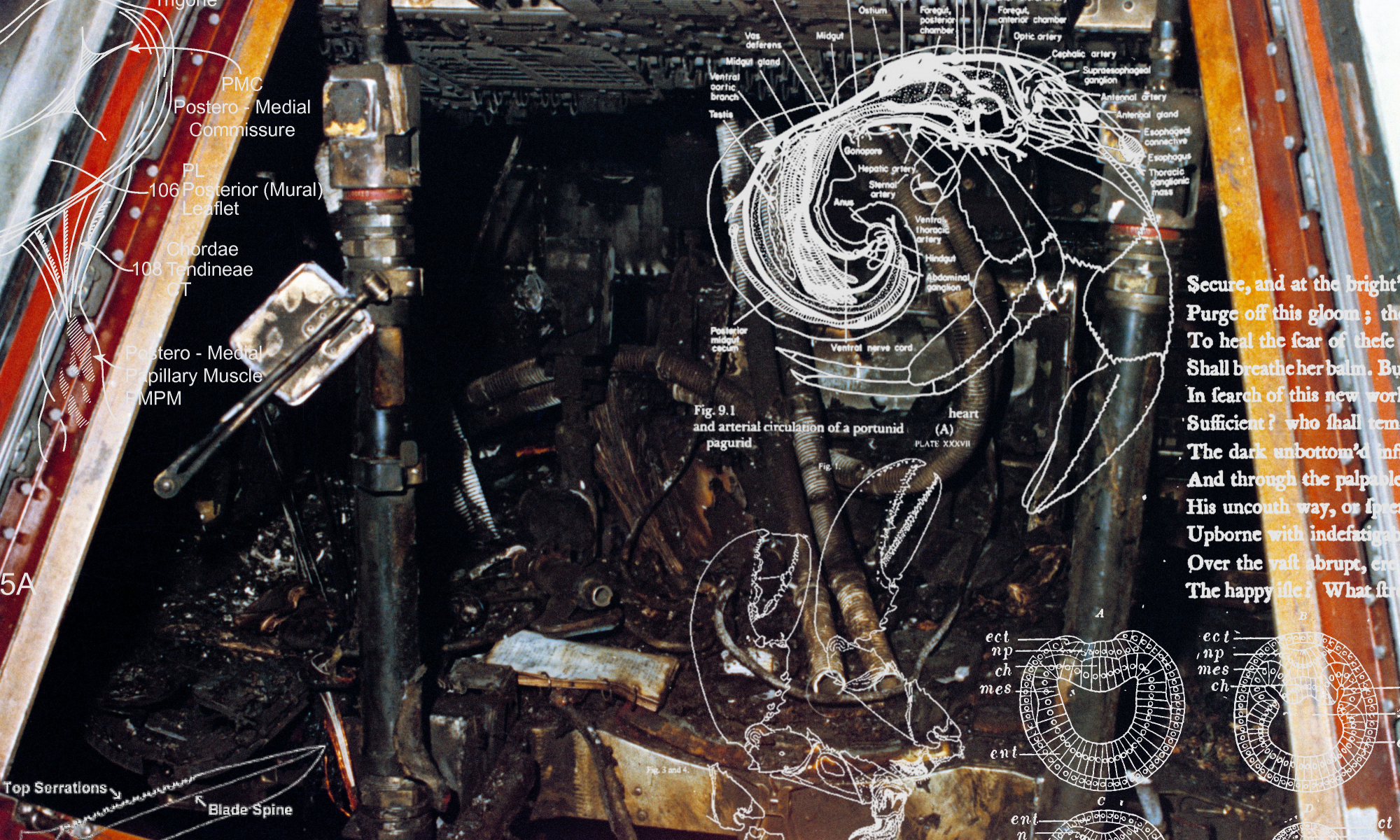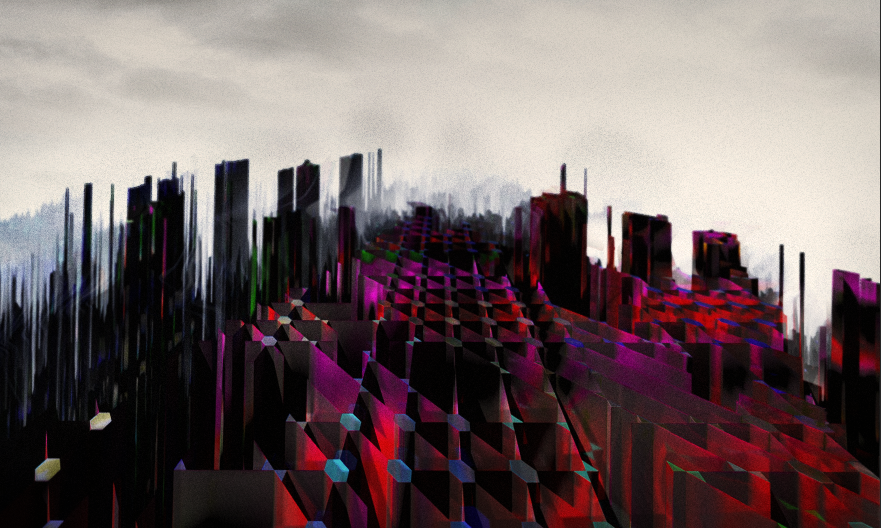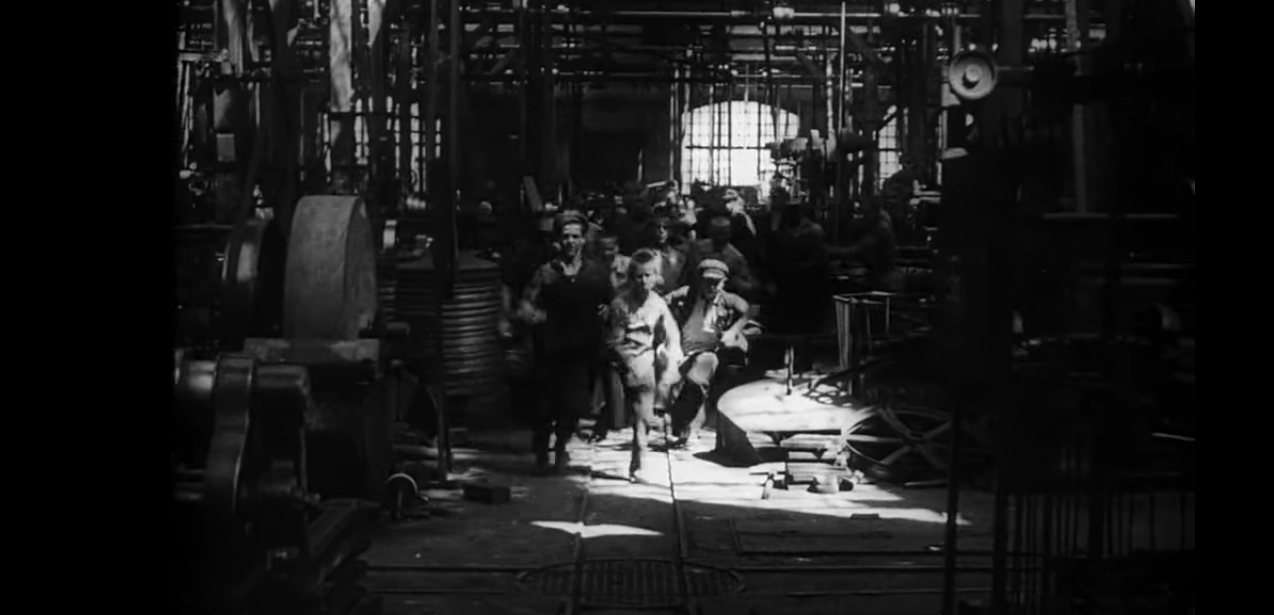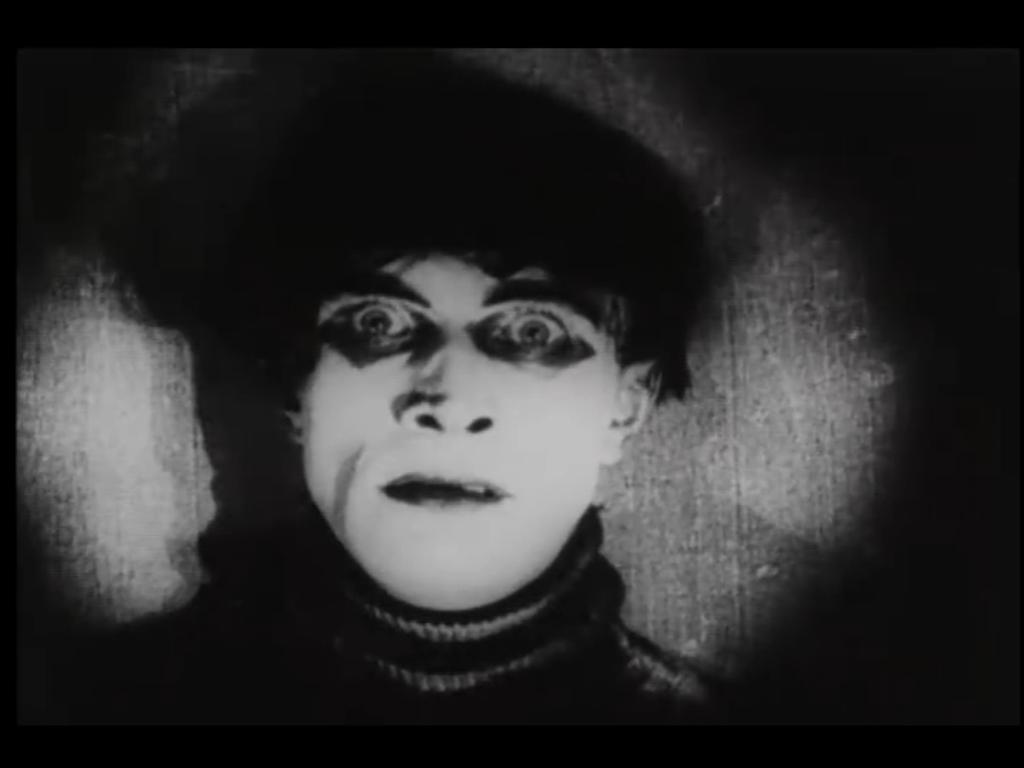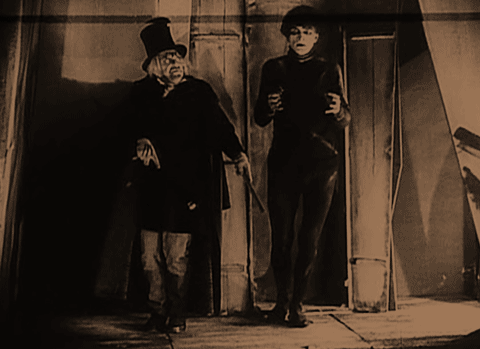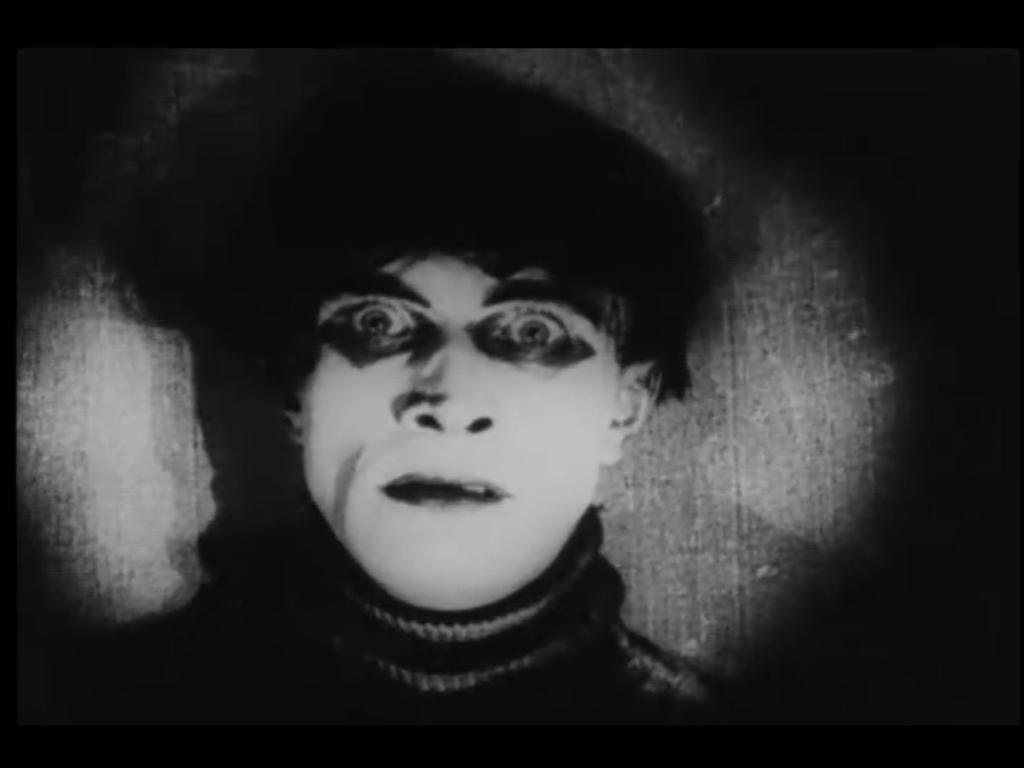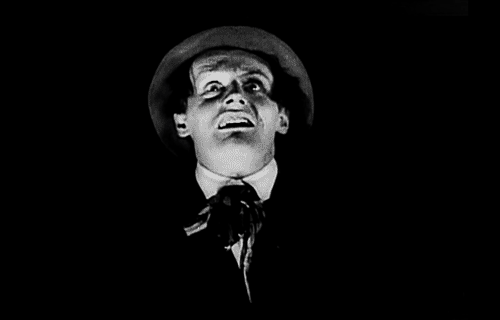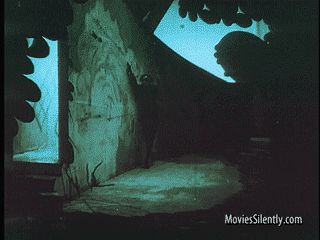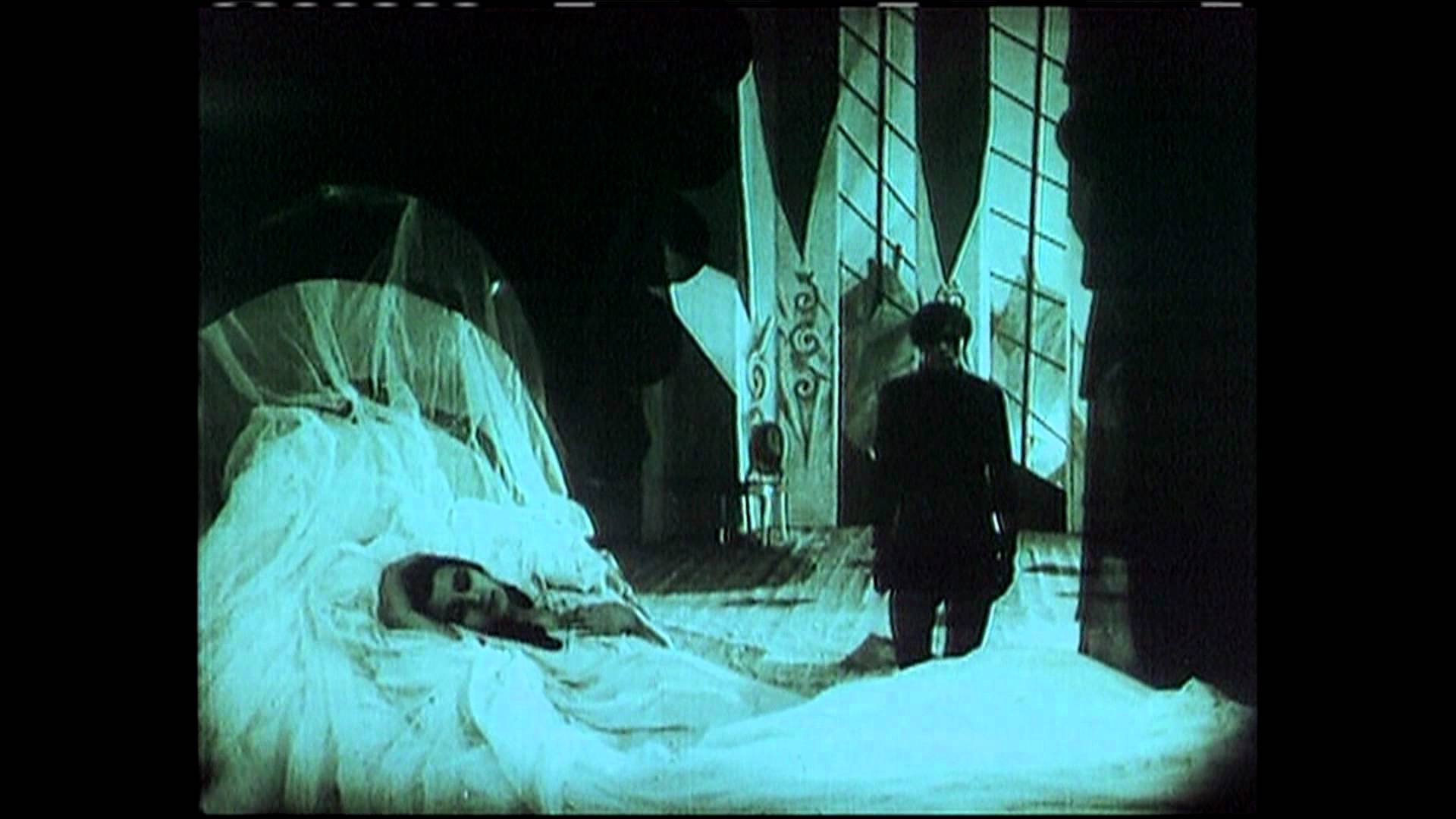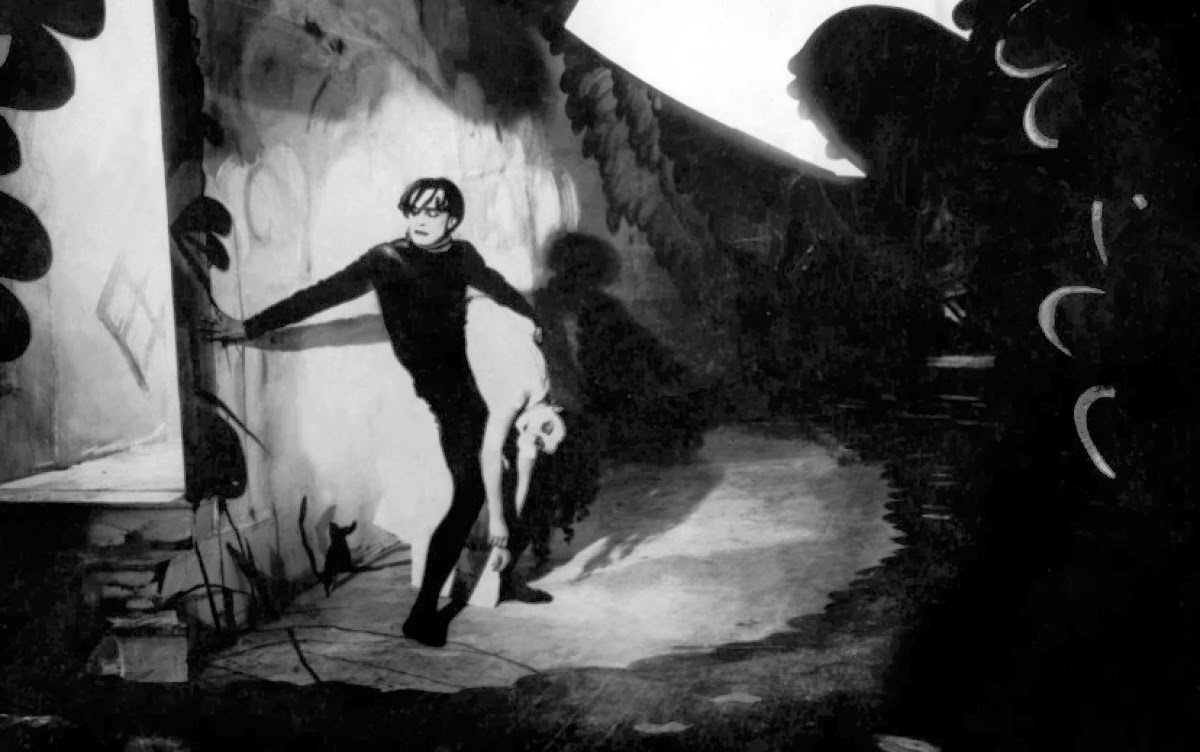Previously: Synthetic Fabrication Part 0
Mysticism and Mechanization
Towards the end of his book on Henri Bergson, Deleuze mined from the philosopher’s work a spectral prefiguration of the people-to-come: the faint traces of an emergent and enigmatic open society, a “society of creators” and ‘privileged’ souls connected together by an imperceptible circuitry. Standing atop a grand, abstract summit, the open society derives its name not only from its differentiation to the closed society, but through that which it opens onto. The open society moves in the direction of what Bergson had called the élan vital, the impulse or force that compels self-organization in matter and morphogenesis through time. Such a movement is an affair of life itself, the sifting apart of the organic from the inorganic, organization from base matter. By ascending up a cosmological hierarchy in order to enter into unending engagement with this force, the mark of the open society is life at its most creative.
The “creative emotion” that defines this society is the “embodiment of cosmic Memory”, one that cuts across “all levels at the same time” and “liberates man from the… level that is proper to him.”[note]Gilles Deleuze, Bergsonism (New York: Zone Books, 1988), 111.[/note] The citizen of the open society is a new type who gives themselves to “open creative totality”. Bergson, Deleuze points out, sees in the figures of the artist and the mystic, each of which fabricates new things from past forms and raw matter, the avatars that best capture the nature of this type:
…the great souls — to a greater extent than philosophers — are those of artists and mystics (at least those of a Christian mysticism that Bergson describes as being completely superabundant activity, action, creation). At the limit, it is the mystic who plays with the whole of creation, who invents an expression of it whose adequacy increases its dynamism. Servant of an open and finite God (such are the characterisics of the élan vital), the mystical soul actively plays the whole of the universe in which there is nothing to see or to contemplate.[note]Ibid., 112.[/note]
Bergson himself intuits, at some undetermined level, a connection between the mystical experience and the processes of industrialization that define modernity.[note]In his comparison of the dark night of the soul with the process of industrial production, Bergson seems to be posing merely an analogy. Later, however, he writes that “we had caught sight of a possible link between the mysticism of the West and its industrial civilization.” See Henri Bergson, The Two Sources of Morality and Religion (London: Macmillian and Co., 1935), 251. [/note] In his book The Two Sources of Morality and Religion, the experience of the dark night of the soul, that sacred passage privileged by the Christian mystics of the apophatic theological current, becomes imbued with mechanical analogies that seem to transcend mere literary flourish. In the final stages of the experience the mystic becomes akin to a “machine of wonderfully tempered steel” that has “became conscious of itself being put together.” This machine is subjected to stress tests and other trials to assess its durability and functioning; it undergoes the feeling of distress and lack. But this rigorous ordeal is precisely what must be passed through to reach a higher state. “The mystic soul yearns to be this instrument. It throws off everything in its substance that is not pure enough, not flexible enough, to be turned to some use by God.”[note]Ibid., 197-198.[/note] To be a creator, then, is to be properly created, and to be used to create, in turn.
This encounter with the creative, unfolding totality returns again and again in the pages of A Thousand Plateaus, particularly in the 11th plateau, titled “1837: Of the Refrain”. Here Deleuze and Guattari describe the already-underway arrival of the “age of the Machine, the immense mechanosphere, the plane of the cosmicization of forces to be harnessed”.[note]Gilles Deleuze and Felix Guattari, A Thousand Plateaus: Capitalism and Schizophrenia (Minneapolis: University of Minnesota Press, 1987), 334.[/note] In this age, the molecular moves to the fore, and the creative act that cascades across all the levels of the totality is revealed as the penetration of these forces and flows in order to unleash the production of the new. The figure of the artist-mystic is resurrected in these pages, but wears a new face: that of the “cosmic artisan” capable of taking leave from the earth. This artisan (alternatively referred to as the “artist-artisan”) helps realize, through the forces of deterritorialization and decoding, a “cosmic people” and a “cosmic earth” — the people-to-come and the New Earth across which they move.
Thus the plateau on the refrain, which charts (among other things) a movement of territorial formation, stability, and exit across a tripartite schema of Classical, Romantic, and Modern ages, provides a highly abstract prism that allows Bergson’s depictions of closed societies and open societies to be read historically. This, admittedly, is the purpose of The Two Sources of Morality and Religion, a work that Ernst Bloch described as “very Marxist”.[note]Hisashi Fujita “Anarchy and Analogy: The Violence of Language in Bergson and Sorel”, in Alexander Lefebvre and Melanie White, Bergson, Politics, and Religion (Durham: Duke University Press, 2012), 131.[/note] Others who followed Bergson and his work closely, however, might have found much to disagree with in this overstatement. Such was the case of Georges Sorel, engineer turned political radical, who expressed in an otherwise-sympathetic review of the philosopher’s work a “wish that Bergson would abandon the largely infantile applications of his philosophy to the natural sciences and instead apply this to the problems raised by the great social movements.”[note]Ibid., 132-133[/note] In Sorel’s hands, the vision of the élan vital is not one of a metaphysical system to be perceived as operating at a cosmological level, but the very force that can be found at each moment in the cascading development of industrial forces: “Bergson’s creative evolution simply imitates the history of human industry… The true place for Bergson’s philosophy is in social studies, especially those concerning the present day.”
Sorel’s reconfiguration and deployment of Bergson’s philosophies in the service of such a pursuit is of immediate interest to elucidating Deleuze’s perspective on fabulation, and the role that it plays in the overall architecture of his philosophy. In Sorel’s works, particularly the 1908 book Reflections on Violence, Bergsonian thought undergoes a mutation by way of a creative encounter with Marxism and revolutionary syndicalism. This mutation helps provide the backbone of an escape route from what Sorel describes as decadence — that is, a wide-ranging slowdown in the forces of industrial development, economic competition, and class struggle that occurs when the bourgeoisie and and proletariat deviate from the historical paths identified by Marx.
“[I]t has been suggested”, writes Jeffrey Mehlman, “that ‘entropy’ is perhaps the dominant institution of Sorel’s thought.”[note]Jeffrey Mehlman, “Georges Sorel and the ‘Dreyfusard Revolution’; in Gail M. Schwab and John R. Jeanneney, The French Revolution of 1789 and Its Impact (Westport: Greenwood Press, 1995), 148.[/note] The second law of thermodynamics, as articulated by Rudolf Clausius in the early 1850s, had by the time Sorel was writing exploded over the socio-cultural landscape. The realization that force forever dissipates made shockingly clear that disorder in a given system builds over time and that, at the horizon, a grand extinguishing looms. The euphoria of the earlier industrial era, swept up in the dream of Newtonian balance and universal harmony, dissolved into a fog of cosmic ennui. Fatigue, dissatisfaction, and a generalized weariness with things radiated through society, matched by an intensified focus on maintenance, regulation, and fitness as a means of holding these forces at bay.[note]For a discussion on the cultural impact of the second law of thermodynamics, and its subsequent implications for industrial discipline, managerialism, organizational theory and the like, see Anson Rabinbach, The Human Motor: Energy, Fatigue, and the Origins of Modernity (New York: Harper Collins, 1990).[/note] Entropy was civilization’s grand enemy. To see it rushing over the gates meant that civilization was splitting apart, teetering at the edge of a grand abyss. For Sorel, writing during a time which we can identify as the eclipsing of early, competitive capitalism by monopoly capitalism, the dimming of modernity’s flames under the conjoined complacency of reform-minded parliamentary socialists and a bourgeoisie that had become an “ultra-civilized aristocracy” heralded the threat of decay and degradation.
The question of entropy also played a major, if often overlooked, role in Bergson’s work, particular where the notion of the élan vital is concerned. In the latter half of the 1800s, the recognition of the doom wrought by entropy triggered oscillations between a world-weary acceptance of the conditions and attempts to forestall it wherever possible. It wouldn’t be until the 1940s when negentropy (negative entropy) would come to be known. Erwin Schrödinger, for example, wrote in his 1944 book What is Life? that a living thing “can only be kept aloof from [entropy], i.e. alive, by continually drawing from its environment negative entropy.”[note]Erwin Schrödinger, What Is Life (Cambridge: Cambridge University Press, 1944), 76.[/note] In order to explain the apparent paradox between constant, localized producing of living order and cosmic decay, Schrödinger’s suggestion was that living organism is imbued with an “astonishing gift of concentrating a ‘stream of order’… of ‘drinking orderliness’ from a suitable environment.” Such a concept was precisely what Bergson was trying to strive towards with the élan vital, defined as it was by a capacity for spontaneous organization and self-regeneration through time.
The second law of thermodynamics, Bergson argued, was nothing short of a metaphysical principle: physics, without the aid of “interposed symbols and… artificial devices and instruments” now “discloses the direction in which evolution is going.”[note]Keith Ansell Pearson, Germinal Life: The Difference and Repetition of Deleuze (New York: Routledge, 1999), 60.[/note] The direction, in its most generalized and cosmological form, appears in the work of physicists like Clausius to be a descent down the hierarchy, into the baseness of unformed, unorganized matter. But this is countered by another tendency, an “an effort to re-mount the incline that matter descends.”[note]Henri Bergson, Creative Evolution (New York: Random House Inc., 1944), 268.[/note] This counter-tendency is the struggle against entropy, seen as necessary by Bergson to explain the existence of life and its prolonged development in the face of the irresistible tug downwards. It is not life itself, but a vital force that runs through the living in their onward evolution — the élan vital. It is the ascent up the hierarchy, characterized by an increase of organization in both social and individual senses, as well as the blurring between the two senses. The élan vital thus appears as a progenitor of the concept of negative entropy. Speaking of the second law of thermodynamics, Bergson wrote that
…everything happens as if it were doing its utmost to set itself free from these laws. It has not the power to reverse the direction of physical changes, such as the principle of Carnot determines it. It does, however, behave absolutely as a force would behave which, left to itself, would work in the inverse direction. Incapable of stopping the course of material changes downwards, it succeeds in retarding it. The evolution of life really continues … [as] an initial implusion: this impulsion… brings life to more and more efficient acts by the fabrication and use of more and more powerful explosives.[note]Ibid. (emphasis in original)[/note]
From this perspective, it isn’t hard to see why somebody like Sorel, concerned about entropic decadence derailing the progress of modernity into the upward momentum that Marx had identified, was attracted to such ways of thinking. If the the élan vital was an early attempt to elucidate negentropic tendencies, and was also that which the open society moved towards, then the affinity of the open society with negentropic organization becomes clear. By bringing into play Bergson’s own hints at a link between the mystic and the mechanical where the ascension to this morphogenicc force is concerned (not to mention Deleuze and Guattari’s own quasi-historicization of these processes), the theory is already moving in the direction that Sorel had wished for it to go — to assessing the development of industrial forces through capitalism.
The question becomes, then, how to translate this movement across a rough and complicated philosophical terrain, into something that counteracts decadence. The answer for Sorel is in precisely a function found in Bergson, albeit one that he disdained: the fabulatory function.
Building the Social Myth
In Bergson’s philosophy, both scientific knowledge and symbolic knowledge, insofar as they stamp nature with the “general bent of the human intellect” in order to bring it in line with a “geometrical and static order”, belong to the domain of relative knowledge.[note]Ellis Sandoz “Myth and Society in the Philosophy of Bergson”, Social Research, Vol. 30, No. 2 (Summer 1963), 173.[/note] The borderlands of this knowledge demarcate the very interior limits of the knowable, with its lines separating the faculty of the intellect from that which is beyond it — that is, the unrepresentable realm of continual change, crystallizing organization, and open systems unfolding through real duration. The intellect, in other words, is encased within the limit that prevents direct encounter with the élan vital, sheared off from access to the absolute.
This sifting-apart of the relative forms of knowledge from the absolute occurs along a fault-line of the temporal. “We do not think in real time”, Bergson suggested, adding that “but we live in it, because life transcends intellect.”[note]Bergson, Creative Evolution, 53.[/note] Thus the phenomenon of life, as an affair of particular and durable types of organization, moves through what cannot be grasped by the intellect — yet for Bergson it is a mistake to suggest that the position of the absolute beyond the grasp of the intellect means that it is fundamentally off-limits to thought. Such was his critique of Kant who, he argued, encased the mind permanently within the borderlands of the intellect. Against this approach, Bergson suggested that another, more subtle and intangible faculty is actually capable of transgressing these limits in order to explore the absolute directly: intuition. This is a faculty that ‘envelopes’ the intellect, and “may enable us to grasp what it is that intelligence fails to give us, and indeed the means of supplementing it.”[note]Ibid., 195.[/note] Intuition and intellect, taken together, are the two ways of knowing a thing, with each correlated to the absolute and relative forms, respectively. They mark the two sides of human consciousness.
Bergson saw the human as holding a particularly unique position in that it stands at the endpoint of the chain of natural evolution. The development of the intellect was vital in maintaining this trajectory, having endowed the human with the capacity to choose between various options at a given time and to navigate the situations that it found itself within. Yet the intellect itself comes to be a double-edged sword: as it enables choice and increased mobility, the possibly for a dangerous egosim haunts it. The intelligent self can continually act in its own interests alone, even at the expense of the society to which it is fundamentally bound. For Bergson, if the active threat of this egoism is not tapered, it will harm the interdependence of sociability, and with it the very possibility of longevity and survival.
How does egoism of the intellect become blunted, if the intellect is simultaneously the means to achieving survival? Here, a critical intervention is staged not by the faculties of the intellect, but by instinct under the guise of habits, or, more properly, the “habit of contracting habits”.[note]Bergson, The Two Sources of Morality and Religion, 17.[/note] As the intellect operates in an environment, dotted with encounters and obstacles and problems to solve, these habits come to compile and reinforce one another, forming into a memory that serves as the foundation for a social morality. The accumulation of habits becomes an order that aims at balancing freedom of choice with collective interest. The question then becomes one of compulsion: given the supposed capacity for free choice (intellect), what obligates the individual to follow this instinctual order of habit-memory? The answer is the story-telling function, fabulation, the formation of essential myths capable of unpinning society. Bergson:
It must be noted that fiction, when it has the power to move us, resembles an incipient hallucination: it can thwart our judgment and reason, which are strictly intellectual faculties. Now what would nature have done, if she wanted to guard against certain dangers of intellectual activity without compromising the future of intelligence? … if intelligence was to be kept at the outset from sliding down a slope which was dangerous to the individual and society, it could only be by the statement of apparent facts, by ghosts of facts; failing real experience, a counterfeit of experience had to be conjured up. A fiction, if it is vivid and insistent, may indeed masquerade as perception and in that way prevent or modify action.[note]Ibid., 109.[/note]
Bergson’s historical assessment was that the fabulatory function first arose in early societies through the attribution of forceful will and what could be regarded as a distinctly human agency to natural events. He padded this thesis out by drawing on William James’s experience of the San Francisco earthquake of 1906. James had written of the incident that he had “personified the earthquake as a permanent individual entity”, a force imbued with an “[a]nimus and intent” like that exercised by “a living agent”.[note]Ibid., 130[/note] He quickly discovered that he was not alone in registering the disaster as an encounter with an uncanny intelligence: many in the midst of the event felt that the Final Judgment was at hand, and that the shaking of the earth was the presence of a “vague daemonic power” moving through the world. In one case, the earthquake was read not as something produced by the tensions of the earth’s crusts and disequilibrium among strata; it was the very thing, some abstract motive agent, that was producing the tensions and disequilibrium. “I realize now much better than ever how inevitable were men’s earlier mythological versions of such catastrophes,” James wrote, “and how artificial and against the grain of our spontaneous perceiving are the later habits into which science educates us.”[note]Ibid., 130-131[/note]
Extrapolating from these insights, Bergson put forward the argument that the genesis of fabulation occurred via the exploration of natural phenomenon through the lenses of a perceived non-human agency, which quickly became assimilated into the expressions of magical ritual and religious fervor. It becomes a machine for producing fictions that are so livid, so life-like that they come to haunt those who speak of it, the color of perception itself for the members of society. Through the regulatory mechanism of religion, fabulation became that which effectively transformed the compulsion to maintain society into cosmological dramas that imposed firm rules and punishment for transgressions. This dynamic, however, did not end in the passage from the ancient to the modern, as “a society without a religion” has never existed as such. Thus even societies that are ostensibly built upon a foundation of reason have, at their very core, a profound unreason, a hallucination or fiction that serves as the a priori for the deployment of the faculty of the intellect for the purpose of obtaining relative knowledge.
And yet the society bound to the fabulatory function will never escape the circular interiority of the closed society. Fabulation, in Bergson’s reading, does not simply produce a counterbalance against the individual’s intellectual egoism, but constitutes a mechanism for determining inclusion and exclusion in accordance with a given society’s mythic underpinning. In other words, fabulation itself is the very function that makes a closed society closed, producing in turn a singular and static order that in the long-term will begin that inexorable descent into entropy. The open society then, for Bergson, is a society that relinquishes itself from the fabulatory function, and trades the myth for the dynamic intuition that moves with the élan vital.
In his appropriation of the theory of the social myth, Sorel — much to Bergson’s criticism — fundamentally transformed this dire outlook on the ultimate nature of fabulation.[note]Bergson’s student Jacques Chevalier later recounted his mentor’s thoughts on Sorel: “He’s a curious man, this old engineer, whose thought had such an effect on Lenin and Mussolini. What he has tried to find in my work is the idea of the generative myth. But he had his own ideas in mind more than my own.” Fujita, “Anarchy and Analogy”, note 12, 124.[/note] No longer was the myth the indirect adversary of negentropic amplification, but the very force necessary to undermine the grip of decadence on society. Bergson might have posed the faculty of intuition as a rising divergence from the social myth, but for Sorel the myth becomes the medium for intuition itself, the prism through which passes that which cannot be known directly by the intellect. It even holds the capacity to power vast movements in the direction of the unknowable. Taking socialism, as a futurity that lay beyond the capacity to think-through it, as his chief concern, he wrote that
Ordinary language could not produce these results in any very certain manner; appeal must be made to collections of images which, taken together and through intuition alone, before any considered analyses are made, are capable of invoking the mass of sentiments which correspond to the different manifestations of the war taken by social against modern society… This method has all the advantages that integral knowledge has over analysis, according to the doctrine of Bergson; and perhaps it might be possible to cite many other examples which would demonstrate equally well the worth of the famous professor’s doctrines.[note]Georges Sorel, Reflections on Violence (Cambridge: Cambridge University Press, 1999), 113 (emphasis in original).[/note]
Reversal
“Myths must be judged as a means of acting on the present,” wrote Sorel in Reflections on Violence. “[A]ll discussion of the method of applying them as future history is devoid of sense. It is the myth in its entirety which is alone important: its parts are only of interest in so far as they bring out the main idea.”[note]Ibid., 116-117.[/note] The myth is thus divorced from the expected outcome that it angles itself toward; what emerges as the important factor is what happens in the present as a result of the myth. The future remains utterly indeterminate — and this is in no small part thanks to the function of the myth itself. Expectations derived from the myth — say, the push towards towards socialism — entail a grand preparation, an immense mobilization even, that will produce effects which will themselves radiate into the indeterminacy of the future, if not ensure it outright. What is most important for Sorel is that mobilization under the directive of the myth breaks apart the static destruction of decadence and helps achieve a renewed sense of real progression.
Such an understanding cuts directly to the core of Sorel’s repurposing of Bergson. Sorel suggested that there was a distinct correlation between socio-cultural (and even industrial) stasis and political optimism. The parliamentary socialists that he so disdained, for instance, were optimists who believed in the ability for “small reforms of the political system” and “governmental personnel” to “direct the movement of society in such a way to mitigate those evils of the modern world which seem so hideous to sensitive souls”.[note]Ibid., 10.[/note] Optimism, correlated with humanist critique and piece-meal solution, undermines radicalism and trades it for a neutered pacifism.
Standing in stark contrast to optimism was pessimism, understood as a “march towards deliverance” that draws, on one hand, from an understanding of intrinsic weakness, and on the other the accumulation of experimental knowledge generated by the continual encounters with obstacles. Through each an understanding of how social order operates is derived. This understanding leaves no space for the social reformist path:
The pessimist regards social conditions as forming a system bound together by an iron law which cannot be evaded, as something in the form of one block, and which can only disappear through a catastrophe that involves the whole. If this theory is admitted, it then becomes absurd to attribute the evils from which society suffers to a few wicked men.[note]Ibid., 11.[/note]
The individual’s will-to-deliverance, the path through pessimism, is consecrated in the form of the social myth. Sorel used the history of Christianity to draw this out. The primitive Christian, for example, found themselves born into a life of bondage, a slave to the earth of which Satan is the prince. In order to survive in this world, the individual gives themselves over to the belief in the future eschatological conflict between God and these forces of darkness: the myth of war and the realization of the New Jerusalem transforms one into something capable of truly existing. The Calvinists took this even further with the added weight of the doctrines of predestination. In the sixteenth century they were able to power an immense revolutionary machine, a “real catastrophic revolution” that fundamentally transformed everything, shaking apart the power structures of Catholicism and undermining its long-held stability.
If Catholicism could be broken apart by the Calvinist revolutionary force, it was because it had lost its connection to the fire of the mythic through the disappearance of the “Church militant”. Calvinism, likewise, suffered a similar fate in the wake of the Renaissance, which for Sorel has ushered in a wave of humanistic thought that brought with it an unbridled optimism. Here, at this point, society begin to run afoul, the groundwork laid for a “ridiculous social pacifism” that drowned out vital, nourishing anger. The iron cage began receding into the background. Soon the bourgeoisie, much like the parliamentary socialists with whom they linked arms, would cease to be like Nietzsche’s ‘warrior types’[note]For Sorel, the Nietzschean ‘master type’ was based upon “ancient heroes and the man who sets out to conquer the Far West” (Ibid., 232). The European bourgeoisie, having slowly reclined into civilized comforts, had fallen short of this idealized state — but for Sorel, it could still be found in the industrious spirit exhibited by capitalists in the United States: “I believe that if Nietzsche had not been so dominated by his memories of being a professor of philology, he would have perceived that the master type still exists under our own eyes, and that it is this type which, at the present time, creates the extraordinary greatness of the United States.” Interestingly, Deleuze and Guattari also draw attention to the exceptional, schizophrenizing nature of American capitalism in both volumes of Capitalism and Schizophrenia, and even note in that “everything important that has happened or is happening takes the route of the American rhizome” (Deleuze and Guattari, A Thousand Plateaus, 19.). The relationship between the “American rhizome” and the figure of the people-to-come will be taken up again in a future section of this essay series.[/note], and come to prefer the large, cumbersome industrial cartels and rationalized industry to the competitive battlefield of the market.
This society, divorced from myth and swallowed by optimism, was (to use Bergson’s parlance) a closed society. Yet it is clear how Sorel reverses Bergson’s schema: for the earlier philosopher, the mythic society was the closed society, held under the sway of a ‘static religion’. In Sorel’s work, decadence was marked by stasis, and it is no stretch to treat the decadent society as the theoretical descendant of the closed society — except that the relationship to myth is fundamentally different. For Bergson, the open society follows the faculty of intuition in a proto-negentropic escape from the closed society’s mythic basis. For Sorel, a precise contrast: the negentropic opening follows through the reinvigoration of the myth of deliverance.
The Revolutionary Myth
It’s important not to mistake Sorel’s myth for more basic forms of propaganda. Perhaps an apt way to pull them apart is to compare each to Mark Fisher’s distinction between sorcery and magic.[note]I owe this insight to Cockydooody. Check out his Totalitarian Collectivist blog right now.[/note] For Fisher, magic, like propaganda, proceeds by operating within a given system, moving in line with its despotic programming in order to ‘organize’ and ‘install’ words and languages with the goal of capturing potentially divergent movement (and to ward off more powerful, threatening ones). Sorcery, by contrast, operates at a much higher — or perhaps, more properly, lower — level. It marks an opening to the Outside, the zone where the Outside pours into the interior. Instead of organizing words into programs, sorcery entails “words melting into Things, and building sensitive side-communication Meshworks that spread”.[note]Mark Fisher, “White Magic”, Virtual Criminologies, http://www.critcrim.org/redfeather/journal-pomocrim/vol-6-virtual/whitemagic.htm. See also CCRU, “Cyberhype VI: The Darkside of the Wave”, Mute, March 10th, 2001, http://www.metamute.org/editorial/articles/cyberhype-vi-darkside-wave. Here, magic is the associated with the reformist gambit of Keynesian economics, and sorcery with the entrepreneur and the rhythmic pulse of creative destruction as identified by Joseph Schumpeter and his work on wave dynamics in capitalism. It goes without saying something like creative destruction is precisely what Sorel is hoping to win out over highly reformed, stagnant capitalism.[/note] It is thus out of reach of human control, generative, and radically open.
Indeed, as Bergson’s understanding of the myth entailed, it isn’t the product of any one person or institution; it is something that organizes itself through time in the intersection of the individual intellect and the wider congealing of habits into social memory. From there it’s only a small leap to Sorel’s Marxist theoretical ground, where social institutions, norms, belief structures, etc., are secondary formations relative to the primary generative processes. In his discussions concerning both ‘primitive Christianity’ and ancient Greece this becomes particularly clear, with the doctrine of original sin and the epic battles of the gods deriving their contexts from material conditions unique to each social order.
This dynamic is in play with Sorel’s chief topic: the myth of the general strike advanced by the revolutionary syndicalist movement of his time. Where did the myth come from? Not from any singular source. It congealed from Proudhon and Bakunin’s anarchic vision of grand industrial federations, and from the communist anticipation of the great revolution looming up on the horizon — and behind each, the tumult of history. The preconditional ferment of this revolutionary consciousness encompassed the eradication of the romantic pastoral under the gears of the dark satanic mills, the dispossession of the agricultural laborer and its assimilation into the inorganic army of the proletariat. Its logic derived from the regimentation of society by the temporal rhythm of the machine, and the expansions and contractions that compose the spiraling, metabolic pulse of industrialization itself. It patches itself together through the disparate strike activities and worker agitations that quickly faded out of sight. Proudhon, Bakunin, Marx, and even Sorel appear from here as speaking not in their own voices, but the voices of subterranean and imperceptible movements taking place underneath the seemingly-stable organization of things. The same dynamic is to be found in the myth of the general strike, as something that has self-organized from below, and is rising up to be spoken by agents who think they are deploying it by their own volition.
As alluded to earlier, whether or not the myth triggers the anticipated catastrophic revolutionary event is ultimately immaterial. As a myth of deliverance, Sorel argued, the specter of the general strike would compel the proletariat to refuse the humanist comforts offered by the parliamentary socialists. Instead, they would “repay with black ingratitude the benevolence of those who wish to protect the workers, to meet with insults the homilies of the defenders of human fraternity and to respond by blows to the advances of the propagators of social peace”.[note]Sorel, Reflections on Violence, 77.[/note] This is the simultaneous intensification of the class struggle and capitalism itself. Having been robbed of the peace promoted by the parliamentary socialists, the ultra-civilized bourgeoisie will cast aside their commitment to “works which promote social justice or [to] democracy”, and come to understand that “they have been badly advised by the people who persuaded them to abandon their trade of creators of productive forces…”.[note]Ibid., 77-78.[/note] Thus the much-required negentropic force becomes identifiable as “proletarian violence”, composing the
only means by which the European nations, stupefied by humanitarianism, can recover their former energy. This violence compels capitalism to restrict its attention solely to its material role and tends to restore it to its warlike qualities it formerly possessed. A growing and solidly organized working class can force the capitalist class to remain ardent in the historical struggle; if a united and revolutionary proletariat confronts a rich bourgeoisie ready for conquest, capitalist society will reach its historical perfection.[note]Ibid., 78-79.[/note]
In the final stages of Sorel’s analysis, the very distinction between socialism (here only capable of being glimpsed through the myth) and capitalism is thrown into disarray. In the forward push to mobilize for the general strike, the whole of the proletarian class undergoes a kind of industrial education. Like Bergson’s mechanical mystic, the individual worker, subjected to the gears of the machine and the pace of production, becomes something different than it was before — in this case, a soldier in an acephalic insurgency, an individual point in an anarchic swarm that undermines the power of the state and the bourgeois opposition.[note]Sorel here appears as an early progenitor of the “Insect Communism” advanced by the likes of Eliphas Apis, among others. See Eliphas Apis, The Insect Communist Manifesto (Terra Nova: Sov-Hive 325 Publishing, 2025). Directly presaging the concerns of Apis, Sorel himself describes ‘perfection in manufacturing’ as a factory or workshop capable of being “considered as a machine whose parts are men.” The industrial education of the workers here produces a “completely mindless life” based on automatic behaviors in relation to the rhythms of production. Thus the “skill the workers acquire can, in the long run, be compared reasonably to the instinct of an insect.” See Georges Sorel, The Illusions of Progress (Berkley: University of California Press, 1969), 195-196. It is also worth noting that Sorel is invoking Bergson’s somnambulist theory of instinct. For an overview of this controversial theory (and the influence of it on Deleuze’s early work), see Christian Kerslake, “Insects and Incest: From Bergson and Jung to Deleuze”, Multitudes, No. 25 (2006), http://www.multitudes.net/Insects-and-Incest-From-Bergson/. [/note] The historical perfection of capitalist society locks into an upward, explosive thrust, and the combatants in this borderless war are stamped with a new “morality of producers” that serves as a motive force for development of industrial production to soar ever higher, towards an economic bridge that pulls together capitalism and the historical stage that follows it.
…the idea of the general strike, constantly rejuvenated by the sentiments provoked by proletarian violence, produces an entirely epic state of mind and, at the same time, bends all the energies of the mind towards the conditions that allow the realization of a freely functioning and prodigiously progressive workshop; we have thus recognized that there is a strong relationship between the sentiments aroused by the general strike and those which are necessary to bring about a continued progress in production. We have then the right to maintain that the modern world possesses the essential motivating power which can ensure the existence of the morality of producers.[note]Sorel, Reflections on Violence, 250. On the “economic bridge” between socialism and capitalism, see The Illusions of Progress, 205-207. See also Vince Garton, “Technoindustrial Capitalism and the Politics of Catastrophic Velocity”, The Cyclonograph, June 23rd, 2017. https://vincentgarton.com/2017/06/23/technoindustrial-capitalism-and-the-politics-of-catastrophic-velocity/ [/note]
Sorel’s understanding of the web of relationships between the proletariat, the generative myth of deliverance, and the wider question of entropic and negentropic fluctuations in socio-economic systems and technological development is one in which the proletariat and bourgeoisie alike are but points in a vaster circuitry that cuts widely across historical development. Whether or not he specifically articulated it as such is rather unimportant, as the movement of the theory of the myth out from its Bergsonian roots makes it all abundantly clear. Social development remains inexorably tied to a techno-industrial underpinning, and actualization of a revolutionary consciousness itself remains fundamentally connected to these processes. The attempt to break out from these conditions — absolute revolution against the process — all but guarantees the pushing of the process to its higher stages. Such is the nature, perhaps paradoxically, of the movement from the closed society to the open society.
Such insight foreshadows, in many respects, the assessments of Deleuze and Guattari, who noted in A Thousand Plateaus that “[h]istory is made only by those who oppose history (not by those who insert themselves into it, or even reshape it).”[note]Deleuze and Guattari, A Thousand Plateaus, 295[/note] It may seem a bit of a stretch to juxtapose Sorel’s work with Deleuze and Guattari, but under a closer inspection numerous similarities begin to appear. Sorel’s strategic inversion of the Bergsonian perspective on the myth is isomorphic to Deleuze’s own treatment of fabulation, which, as indicated in the introduction, is the conduit through which new political formations and can identities emerge. Similarly, the emphasis on closed and open systems returns again in the work of Deleuze, both with and without Guattari; as with Sorel, the relationship between these sorts of systems and thermodynamically-charged sciences is also highlighted. And finally, the intermingling of these forces in the production of the new acts as a profound bridge between the two. Each heralds the emergence of mutant politics, unique to the dynamics of modernity, that stretches itself towards the New People and the New Earth.
Nonetheless, it would be overstating matters to suggest a direct correlation between Sorel and Deleuze (and Guattari), as each pursued divergent paths that overlapped only at points. The following section will, with Sorel’s theories in mind, begin to unpack Deleuze’s own transfiguration of the theory of the myth.
